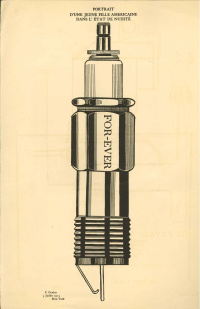Francis Picabia
From The Art and Popular Culture Encyclopedia

|
Related e |
|
Featured: |
Francis-Marie Martinez Picabia (1879 - 1953) was a French painter and poet associated with dada, surrealism and anarchism influential to such artists as Enrico Baj.
A distinct portion of his work (Portrait of an American Girl in the Nude (1915) ) was a celebration of the machine age.
From 1913 to 1915 Picabia traveled to New York City several times and took active part in the avant-garde movements, introducing modern art to America.
Biography and work
Born in Paris of a French mother and a Spanish-Cuban father who was an attaché at the Cuban legation in Paris, France, he studied at École des Beaux-Arts and École des Arts Decoratifs. In the beginning of his career, from 1903 to 1908, he was influenced by the impressionist painting of Alfred Sisley. From 1909, he came under the influence of the cubists and the Golden Section (Section d'Or).
Around 1911 he joined the Puteaux Group, which met at the studio of Jacques Villon in the village of Puteaux. There he became friends with artist Marcel Duchamp. Some of the group's members were, Apollinaire, Albert Gleizes, Roger de La Fresnaye, Fernand Leger and Jean Metzinger.
From 1913 to 1915 Picabia traveled to New York City several times and took active part in the avant-garde movements, introducing modern art to America. These years can be characterized as Picabia's proto-Dada period, consisting mainly of his portraits mécaniques, published in "291".
Later, in 1916, while in Barcelona he started his well-known Dada periodical 391, in which he published his first mechanical drawings. He continued the periodical with the help of Duchamp in America.
Picabia continued his involvement in the Dada movement through 1919 in Zürich and Paris, before breaking away from it after developing an interest in Surrealist art. (See Cannibale, 1921.) Again he changed his style in 1925, when he returned to figurative painting.
During the 1930s, he became a close friend of Gertrude Stein. In the early 1940s he moved to the south of France, where his work took a surprising turn - he produced a series of paintings based on the nude and glamour photos in French "Girlie" magazines, in a garish style which appears to subvert traditional, academic nude painting, such as Femme au bulldog.
Before the end of World War II, he returned to Paris where he resumed abstract painting and writing poetry. He had love affairs with dancers whom he painted. "I see again in my memory my dear udnie" for example, is a painting and an ode to a dancer he was involved with.
A large amount of his work involves the mechanical representation of people.
A large retrospective of his work was held at the Galerie René Drouin in Paris in the spring of 1949.
Picabia loved fast automobiles and is said to have owned as many as one hundred and fifty of them.
Francis Picabia died in Paris in 1953 and was interred in the Cimetière de Montmartre.
In recent years, a Picabia painting has sold for as much as $1.6 million.

